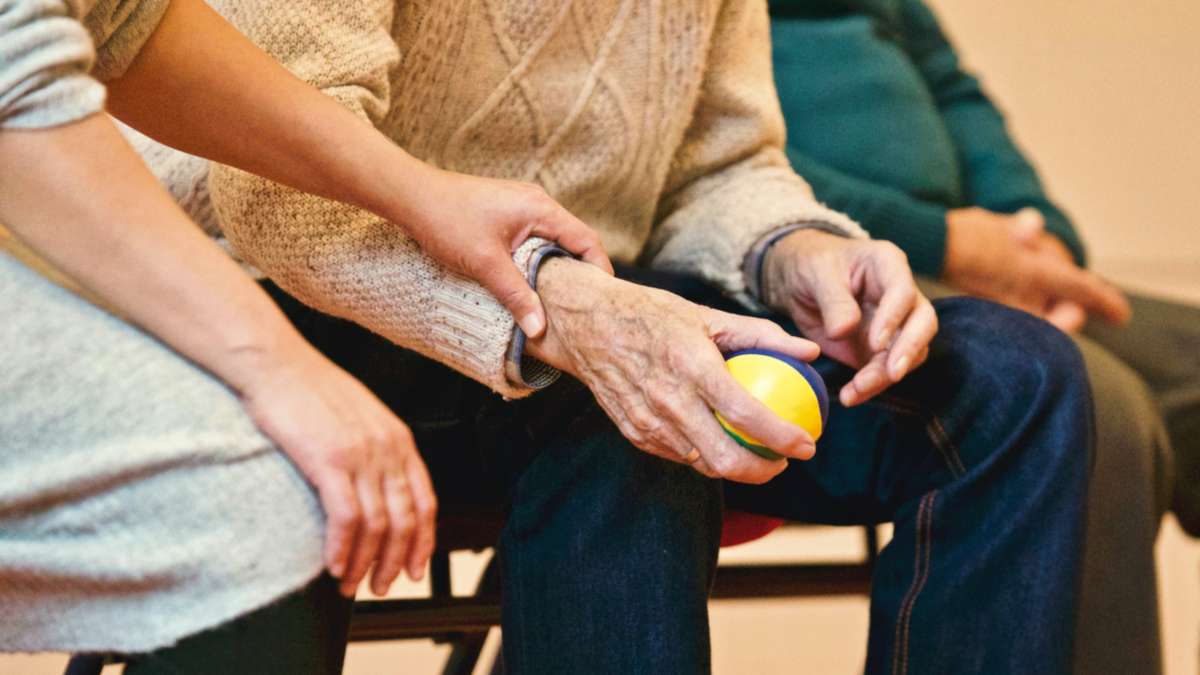If you are responsible for taking care of an ill or elderly relative, you can take a number of various approaches. One of the things that may come to mind for you is what distinguishes nursing homes from rehabilitation centres. It's important to note that there are substantial distinctions between the two, despite the fact that both provide these services.
It's true that both nursing homes and rehabilitation centres care for their patients, but the services they offer and the costs they incur are very different. Before deciding which facility is best, families should consider the patient's unique needs and the breadth of care offered by each option.
Those in need of rehabilitation for a family member might look into several different facilities. How do you decide between a skilled nursing facility and an inpatient rehabilitation centre? Rehabilitative care centres and nursing homes are designed to help the elderly regain their abilities, get back to their regular lives, and remain as independent as possible. Many of the same rehabilitative services are provided by both, however the severity of the programmes provided may differ.
You and your loved one's doctor should discuss the advantages and disadvantages of both of these rehabilitation programmes before making a final decision.
Frequently Asked Questions
If your loved one only needs short term care as they recover from a surgery or illness, then a rehab facility will be the best option.
Nursing homes offer a solution for families that must decide what to do with elderly loved ones who can no longer live independently. A rehabilitation centre will work with your loved one to assist them in achieving their goals, including returning home after treatment if they are able to do so and recovering from their addiction.
In most cases, the level of rigors therapy that is offered in a rehabilitation centre is not available in nursing homes; nonetheless, nursing homes sometimes offer some therapies. However, a rehabilitation centre will provide your loved one with different sorts of rigors therapy to help them recover their mobility, balance, endurance, and strength so that they can return to their normal life at home.
The length of time someone spent in the hospital before passing away was 13.7 months on average, with five months being the median. Within a period of six months, 53 percent of the nursing home residents that were part of the study passed away. Men lived for three months on average, while women lived for eight months before passing away.
Rehabilitative centres are geared on assisting patients in making the transition back to their regular lives, whereas nursing homes are seeking for patients who require care for an extended period of time or towards the end of their lives.
Nursing Home

A nursing home is a facility that provides 24-hour skilled nursing and personal care to persons who are unable to care for themselves. The public and the private typically own them, respectively. Conditions such as hip fractures, strokes, pneumonia, and heart difficulties are just few of the many that may necessitate rehabilitation treatments for elderly patients. Skilled nursing facilities provide both long-term care for patients and short-term, temporary housing. These services are available 24/7.
Pros:
- Nursing homes are easily accessible. Even in the smallest of towns, dozens of people live there, so it's a decision that almost anyone could make.
- They are accepted by a wide range of insurance companies.
- It's easier to pay a visit because they're typically situated close to loved ones.
- Nursing home residents and their loved ones are encouraged to take part in a wide range of fun and engaging frequent social and recreational events.
- Long-term care is prioritised over rehabilitating patients to return them to their previous lifestyles.
- At any time of day or night, they are there to tend to your medical needs.
Cons:
- Government subsidies can typically cover all or almost all of the cost of a nursing home.
- The staff-to-patient ratio may not be optimal.
- Standard accommodation and board may include up to two people sharing a room and three square meals per day unless otherwise specified.
- They might not have onsite rehabilitation services.
For those who, or whose loved ones, require long-term or permanent care and support, nursing homes provide a conveniently accessible and practical option. These may range from very basic support to full-blown nursing care over the course of several years, depending on the facility you choose.
Every institution is different in the services it provides, so patients and their families need to think about what is affordable given their finances and insurance coverage.
Are you looking for the best rehab centre? Then Refocus Rehab Melbourne is the answer.
Therapy for the elderly often lasts between one and two hours each day in skilled care facilities. Beyond only providing personal care, we also help them with things like eating, bathing, and using the restroom. These institutions employ a wide range of professionals, such as CNAs (certified nursing assistants), LPNs (licenced practical nurses), RNs (registered nurses), and OTs (occupational therapists), PTs (physical therapists), and SLPs (speech-language pathologists).
After the team has evaluated your loved one's health and rehabilitation objectives, they will create a personalised care plan. Your loved one's individual needs for rehabilitation treatments are specified in the plan, along with the frequency with which they will receive those services.
Rehabilitation Centre
Rehab centres can be public or private institutions, but they always serve the same function by providing patients with therapeutic and educational services. In addition to occupational therapy and physical therapy, this centre will also offer speech therapy. Some facilities may offer additional specialised services not offered by others.
Public rehabilitation centres exist alongside private nursing facilities.
Pros:
- The facility offers in-house rehabilitation services and places a premium on therapy to ease patients' readjustment to assisted living and their previous routines.
- They are accepted by a wide range of insurance companies.
- There will be two people sharing a room if room and board is provided unless other arrangements are made.
- Residents receive three healthy meals per day and may have access to a commissary or comparable facility for snacks outside of meal times.
Cons:
- There is little emphasis on either long-term care or care at the end of life.
- Rehab facilities are meant to help patients get back on their feet as quickly and safely as possible. allows for the availability of more beds and ensures a gentle reintegration into society for the patient.
The biggest difficulty is deciding which rehabilitation centre is the ideal one for you and whether or not they offer the treatment you need. Inpatient therapy is typically provided in a rehabilitation facility rather than a nursing home.
Bedridden patients with long-term terminal or disabling illnesses and/or those who have suffered traumatic brain injuries may require therapy that is not always available in a nursing home setting.
However, people who have been diagnosed with a condition that severely limits their mobility are welcome in nursing homes. But they tend to take on people who are either unable or reluctant to resume their normal routine. As a result, nursing homes actively seek out patients who need terminal or long-term care, whereas rehabilitation facilities prioritise helping patients return to their usual lives.
What Exactly Is Meant By The Term "Inpatient Rehab Centre"?
Facilities within hospitals that are devoted primarily to delivering treatment services are where inpatient rehabilitation takes place. Nursing care, orthopaedic rehabilitation, physical, occupational, and speech therapy, and other forms of therapy are all available at inpatient rehabilitation centres, just as they would be at a skilled nursing facility. On the other hand, inpatient rehabilitation centres focus on providing acute care for elderly patients who require more intensive therapy and recuperation than can be provided in an outpatient setting.
Regular rigours therapy may be necessary for elders who have suffered a stroke, catastrophic injury, surgery, or amputation. Clients receive three hours of therapy, six days a week, in treatment centres to help them recover rapidly and safely.
Rehabilitating at an inpatient rehabilitation centre rather than a skilled nursing facility is faster for elderly patients. Rehabilitation stays often last between ten and thirty-five days on average. Usually, people end up spending between between 24 and 60 days in a nursing home or other form of specialised care. Inpatient rehabilitation centres are quite similar to skilled nursing facilities in that they both offer patients food, personal care, and assistance with daily activities.
See our list of available Rehabilitation Programmes to help you make an informed decision for your treatment.
How They Cooperate With One Another?
Nursing homes and rehabilitation centres often work together to provide better care for their patients. A patient may initially seek care at a rehabilitation facility and subsequently transition to a nursing home for further therapy. When people leave nursing homes, it is not uncommon for them to spend some time in a rehabilitation institution before returning to a nursing home. It is not lost on certain facilities that they could benefit from both institutions. A patient may be transferred between the two until they are deemed healthy enough to return home. Furthermore, if a nursing home is the primary goal, the patient will be in a comfortable environment that promotes rapid recovery.
How Do You Decide Whether To Go To A Skilled Nursing Facility Or A Rehabilitation Centre?
Before choosing the right rehabilitation programme for your ageing loved one, it is crucial to have a conversation with their primary care physician about their rehabilitation objectives and requirements. Here are some important things to think about while choosing between competent nursing and rehabilitation:
Intensity Of The Program:
Programs available at nursing homes and rehabilitation facilities may range in terms of their degree of complexity. Your parent's primary care physician is the best person to advise you on the frequency and type of therapeutic services they may need.
Duration Of One's Stay:
Is the family member eager to return home as soon as possible, or do they seem a bit ambivalent about it? The length of time a patient spends in a rehabilitation facility can be reduced when they engage in more strenuous treatment modalities.
Access To General Practitioners As Well As Specialists:
Inpatient rehabilitation centres may be useful for the elderly with complex rehabilitation needs since they provide daily access to a physician and the different rehabilitation specialists who are available. However, on average, residents in nursing homes only see a doctor once every three days. Licensed nurses with extensive experience in rehabilitation services are often indispensable to in-patient rehabilitation facilities. Skilled nursing teams often include certified nursing assistants who have also received training in long-term care. These helpers are employed by and report to an RN or LPN.
Prices And Insurance Coverage:
Full or partial Medicare coverage is possible for your loved one in a skilled nursing facility or rehabilitation centre; however, if your loved one opts for inpatient rehab, they may be responsible for paying a deductible out of pocket.
A Quick Comparison Of Skilled Nursing Facilities And Rehabilitation Centers
When comparing the goals of a nursing home with a local rehabilitation centre, you'll notice several key distinctions. For instance, nursing homes provide long-term care, and the vast majority of their residents do not return to their own homes after receiving treatment there. Treatment at a rehabilitation centre, on the other hand, is directed towards helping patients return to independent living and gainful employment. Therefore, these facilities provide short-term care with an emphasis on getting patients back to their regular routines at home as soon as possible.
Rehabilitation centres have many advantages over nursing homes for post-operative, post-injury, and post-illness rehabilitation. Acute care environments that prioritise rehabilitation rather than long-term care have been shown to improve patients' chances of a speedy recovery and positive results.
The Most Important Aspects
- The strenuous nature of the schedule
- A usual stay length
- Getting in touch with qualified doctors
- Personnel-related costs and insurance premiums
- Meals
Nursing Home With Skilled Personnel
- The average length of a therapy session is 1-2 hours every day.
- 24-60 days
- The doctors often do between one and three checkups per week.
- In most nursing homes, CNAs work under the supervision of RNs or LPNs.
- It's possible that insurance will pay for the full stay, or it's possible that it will only cover a portion of it, depending on factors such as the patient's condition and the length of their hospitalisation.
- A nursing home's residents' meals are prepared by registered dietitians.
- Assistance with meals is usually available from caregivers for residents who have difficulty doing it independently.
In-Patient Rehabilitation Treatment
- Ten to thirty-five days of daily treatment for at least three hours
- Frequent trips to the doctor's office
- A rehabilitative care nurse is a registered nurse who focuses on delivering medical rehabilitation services.
- Depending on the centre, it's conceivable that a deductible will be demanded.
- Each apartment in an assisted living community often has a kitchenette, but residents also have the option of making their own food and eating in the community's dining rooms if they prefer.
- A small number of the restaurants offer a delivery service for a fee. A restaurant can either serve meals at set times or remain open 24 hours a day.
Which Kind Of Accommodation Is Appropriate For You?

The sort of facility that is best for you will depend on your current health and how much help you need with day-to-day activities. You can use the following set of questions as a guide when deciding which type of care facility would be best for you or the person in your care.
- How much help do you need with things like showering, getting dressed, and using the restroom?
- Do you need extensive medical care for serious conditions?
- Can you prepare meals by yourself?
- When it comes to your health care, how do you plan on footing the bill?
How to Pick the Most Appropriate Facility for Assisted Living or Nursing Home Care?
Having decided what features are most important to you, the following step is to do some research on available facilities to find the greatest possible match.
- Consider these points when you evaluate alternate locations:
- Is there evidence that the facility has been approved by the appropriate authorities?
- Can I get audit or inspection reports from the institution to make sure it's up to some sort of healthcare organization's standards?
- Can you tell if the residents are happy with the services provided to them?
- What are the names and schedules of the on-duty physicians, nurses, and other medical staff?
- How many staff members do you have compared to residents?
- Can you give me an annual breakdown of the employee turnover rate?
- Is there a procedure that should be followed in the event of a medical emergency involving a resident?
- Can patients receive care from their primary care physicians and other home healthcare professionals?
- Which amenities are included in the base price and which ones require additional payment?
- To whom do the patients owe the task of delivering their medication?
- Will I be able to get rides to and from my doctor's appointments?
- How far away from your family and friends is the institution exactly?
- Can you tell me about the various recreational options available?
- Do locals often congregate together?
- Can tenants bring their own couches and beds?
- Where can I use the restrooms if I need more than one?
- Is the business affiliated with any specific religious group?
- Have you been provided with a copy of the contract to review in order to familiarise yourself with the terms, conditions, and pricing?
If at all possible, you should frequent the establishments in issue many times. Find out which facilities in your area give the best care by talking to people you know, people you live near, people you work with, people who work in the medical industry, and local organisations that support older people.
This article will help you make a decision about Rehab Treatment Melbourne fees for different treatments.
If the goal is to help an older person maintain their independence, home health aides or assistants may be a more attractive and cost-effective option than nursing homes.
Shared housing, where people of similar ages live together or with someone younger, is another option gaining popularity. It has the potential to alleviate housing costs and decrease social isolation.
People who are looking for companionship but do not need extensive medical care may want to consider board-and-care homes, often known as adult family homes. Both are included in these homes.
Board-and-care houses, which house numerous seniors in a single household with a resident caretaker, provide a more personal residential setting than nursing facilities or retirement communities.
Choosing to relocate from independent living to assisted living or a skilled nursing facility is not an easy choice. However, learning about the options in your area is a great place to begin.
Moving into an assisted living community may be the best option if you're healthy overall but could use some help with routine tasks. A nursing home, on the other hand, may be the best alternative if you need extensive medical attention beyond the regular visiting hours.
The next stage, after deciding what sort of facility will meet your needs, is to look into the local options in greater depth to choose a place that fits your budget, meets your specific needs, and provides the services you desire.
Conclusion
Families should consider the patient's unique needs and the breadth of care offered by each facility. A nursing home is a facility that provides 24-hour skilled nursing and personal care to persons who are unable to care for themselves. Rehabilitation care centres and nursing homes are designed to help the elderly regain their abilities. Skilled nursing facilities provide both long-term care for patients and short-term, temporary housing. These institutions employ a wide range of professionals, such as CNAs (certified nursing assistants), LPNs (licenced practical nurses), RNs (registered nurses) and OTs (occupational therapists).
Rehabilitation centres are meant to help patients get back on their feet as quickly and safely as possible. Inpatient therapy is typically provided in a rehabilitation facility rather than a nursing home. Rehabilitating at an inpatient rehabilitation centre rather than a skilled nursing facility is faster for elderly patients. Nursing care, orthopaedic rehabilitation, physical, occupational, and speech therapy, and other forms of therapy are all available at rehabilitation centres just as they would be at a nursing home. The length of time a patient spends in a rehabilitation facility can be reduced when they engage in more strenuous treatment modalities.
Licensed nurses with extensive experience in rehabilitation services are indispensable to in-patient rehabilitation facilities. Skilled nursing teams often include certified nursing assistants who have also received training in long-term care. The sort of facility that is best for you will depend on your current health and how much help you need with day-to-day activities. You can use the following set of questions as a guide when deciding which type of care facility would be most appropriate for you. This article will help you make a decision about Rehab Treatment Melbourne fees for different treatments.
Find out which facilities in your area give the best care by talking to people you know, or people who work in the medical industry, and local organisations that support older people. If the goal is to help an older person maintain their independence, home health aides or assistants may be a more attractive and cost-effective option than nursing homes. Sharing housing, where people of similar ages live together or with someone younger, is another option gaining popularity.
Content Summary
- One of the things that may come to mind for you is what distinguishes nursing homes from rehabilitation centres.
- It's true that both nursing homes and rehabilitation centres care for their patients, but the services they offer and the costs they incur are very different.
- Before deciding which facility is best, families should consider the patient's unique needs and the breadth of care offered by each option.
- Those in need of rehabilitation for a family member mIf you are responsible for taking care of an ill or elderly relative, you can take a number of various approaches.
- How do you decide between a skilled nursing facility and an inpatient rehabilitation centre?Rehabilitative care centres and nursing homes are designed to help the elderly regain their abilities, get back to their regular lives, and remain as independent as possible.
- You and your loved one's doctor should discuss the advantages and disadvantages of both of these rehabilitation programmes before making a final decision.
- These services are available 24/7.Cons: Government subsidies can typically cover all or almost all of the cost of a nursing home.
- Are you looking for the best rehab centre?Then Refocus Rehab Melbourne is the answer.
- A nursing home is a facility that provides 24-hour skilled nursing and personal care to persons who are unable to care for themselves.
- Skilled nursing facilities provide both long-term care for patients and short-term, temporary housing.
- At any time of day or night, they are there to tend to your medical needs.
- Cons:Government subsidies can typically cover all or almost all of the cost of a nursing home.
- They might not have onsite rehabilitation services.
- For those who, or whose loved ones, require long-term or permanent care and support, nursing homes provide a conveniently accessible and practical option.
- These may range from very basic support to full-blown nursing care over the course of several years, depending on the facility you choose.
- Are you looking for the best rehab centre?
- Then Refocus Rehab Melbourne is the answer.
- Therapy for the elderly often lasts between one and two hours each day in skilled care facilities.
- After the team has evaluated your loved one's health and rehabilitation objectives, they will create a personalised care plan.
- Your loved one's individual needs for rehabilitation treatments are specified in the plan, along with the frequency with which they will receive those services.
- The biggest difficulty is deciding which rehabilitation centre is the ideal one for you and whether or not they offer the treatment you need.
- Inpatient therapy is typically provided in a rehabilitation facility rather than a nursing home.
- Bedridden patients with long-term terminal or disabling illnesses and/or those who have suffered traumatic brain injuries may require therapy that is not always available in a nursing home setting.
- As a result, nursing homes actively seek out patients who need terminal or long-term care, whereas rehabilitation facilities prioritise helping patients return to their usual lives.
- Facilities within hospitals that are devoted primarily to delivering treatment services are where inpatient rehabilitation takes place.
- Nursing care, orthopaedic rehabilitation, physical, occupational, and speech therapy, and other forms of therapy are all available at inpatient rehabilitation centres, just as they would be at a skilled nursing facility.
- Rehabilitating at an inpatient rehabilitation centre rather than a skilled nursing facility is faster for elderly patients.
- Usually, people end up spending between between 24 and 60 days in a nursing home or other form of specialised care.
- See our list of available Rehabilitation Programmes to help you make an informed decision for your treatment.
- A patient may initially seek care at a rehabilitation facility and subsequently transition to a nursing home for further therapy.
- When people leave nursing homes, it is not uncommon for them to spend some time in a rehabilitation institution before returning to a nursing home.
- How Do You Decide Whether To Go To A Skilled Nursing Facility Or A Rehabilitation Centre?Before choosing the right rehabilitation programme for your ageing loved one, it is crucial to have a conversation with their primary care physician about their rehabilitation objectives and requirements.
- Programs available at nursing homes and rehabilitation facilities may range in terms of their degree of complexity.
- Your parent's primary care physician is the best person to advise you on the frequency and type of therapeutic services they may need.
- The length of time a patient spends in a rehabilitation facility can be reduced when they engage in more strenuous treatment modalities.
- Access To General Practitioners As Well As Specialists:Inpatient rehabilitation centres may be useful for the elderly with complex rehabilitation needs since they provide daily access to a physician and the different rehabilitation specialists who are available.
- Licensed nurses with extensive experience in rehabilitation services are often indispensable to in-patient rehabilitation facilities.
- Skilled nursing teams often include certified nursing assistants who have also received training in long-term care.
- These helpers are employed by and report to an RN or LPN.Prices And Insurance Coverage:Full or partial Medicare coverage is possible for your loved one in a skilled nursing facility or rehabilitation centre; however, if your loved one opts for inpatient rehab, they may be responsible for paying a deductible out of pocket.
- A Quick Comparison Of Skilled Nursing Facilities And Rehabilitation CentersWhen comparing the goals of a nursing home with a local rehabilitation centre, you'll notice several key distinctions.
- For instance, nursing homes provide long-term care, and the vast majority of their residents do not return to their own homes after receiving treatment there.
- Treatment at a rehabilitation centre, on the other hand, is directed towards helping patients return to independent living and gainful employment.
- Therefore, these facilities provide short-term care with an emphasis on getting patients back to their regular routines at home as soon as possible.
- Acute care environments that prioritise rehabilitation rather than long-term care have been shown to improve patients' chances of a speedy recovery and positive results.
- The Most Important AspectsThe strenuous nature of the scheduleA usual stay lengthGetting in touch with qualified doctorsPersonnel-related costs and insurance premiumsMealsNursing Home With Skilled PersonnelThe average length of a therapy session is 1-2 hours every day.24-60 daysThe doctors often do between one and three checkups per week.
- It's possible that insurance will pay for the full stay, or it's possible that it will only cover a portion of it, depending on factors such as the patient's condition and the length of their hospitalisation.
- A nursing home's residents' meals are prepared by registered dietitians.
- Each apartment in an assisted living community often has a kitchenette, but residents also have the option of making their own food and eating in the community's dining rooms if they prefer.
- Which Kind Of Accommodation Is Appropriate For You?The sort of facility that is best for you will depend on your current health and how much help you need with day-to-day activities.
- You can use the following set of questions as a guide when deciding which type of care facility would be best for you or the person in your care.
- Can you give me an annual breakdown of the employee turnover rate?Is there a procedure that should be followed in the event of a medical emergency involving a resident?Can patients receive care from their primary care physicians and other home healthcare professionals?Which amenities are included in the base price and which ones require additional payment?To whom do the patients owe the task of delivering their medication?Will I be able to get rides to and from my doctor's appointments?How far away from your family and friends is the institution exactly?Can you tell me about the various recreational options available?Do locals often congregate together?Can tenants bring their own couches and beds?Where can I use the restrooms if I need more than one?Is the business affiliated with any specific religious group?Have you been provided with a copy of the contract to review in order to familiarise yourself with the terms, conditions, and pricing?If at all possible, you should frequent the establishments in issue many times.
- Find out which facilities in your area give the best care by talking to people you know, people you live near, people you work with, people who work in the medical industry, and local organisations that support older people.
- This article will help you make a decision about Rehab Treatment Melbourne fees for different treatments.
- If the goal is to help an older person maintain their independence, home health aides or assistants may be a more attractive and cost-effective option than nursing homes.
- People who are looking for companionship but do not need extensive medical care may want to consider board-and-care homes, often known as adult family homes.
- Choosing to relocate from independent living to assisted living or a skilled nursing facility is not an easy choice.
- However, learning about the options in your area is a great place to begin.
- Moving into an assisted living community may be the best option if you're healthy overall but could use some help with routine tasks.







